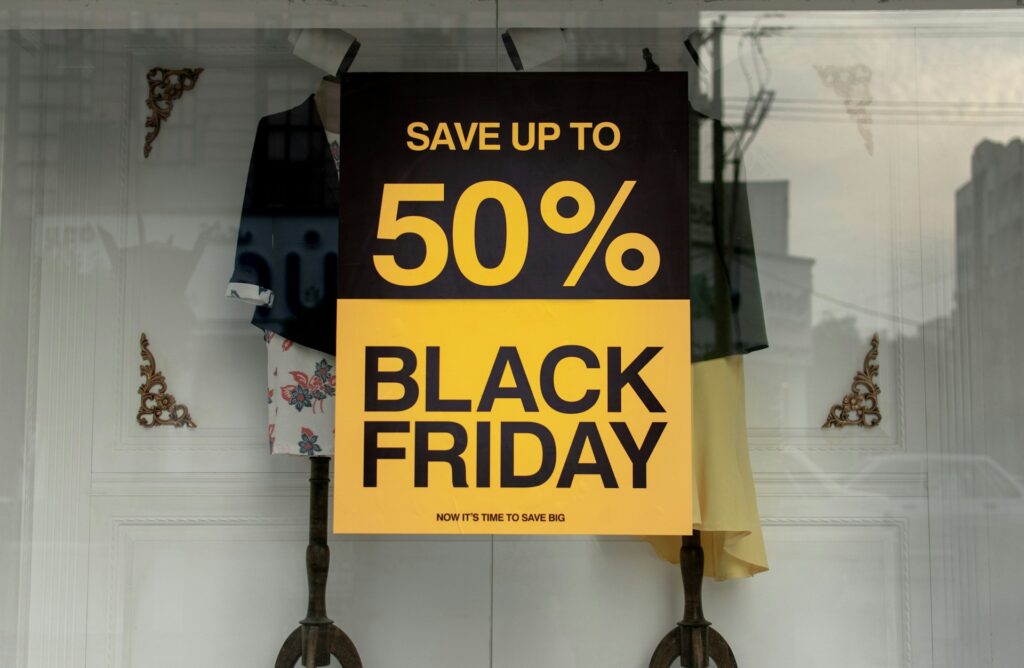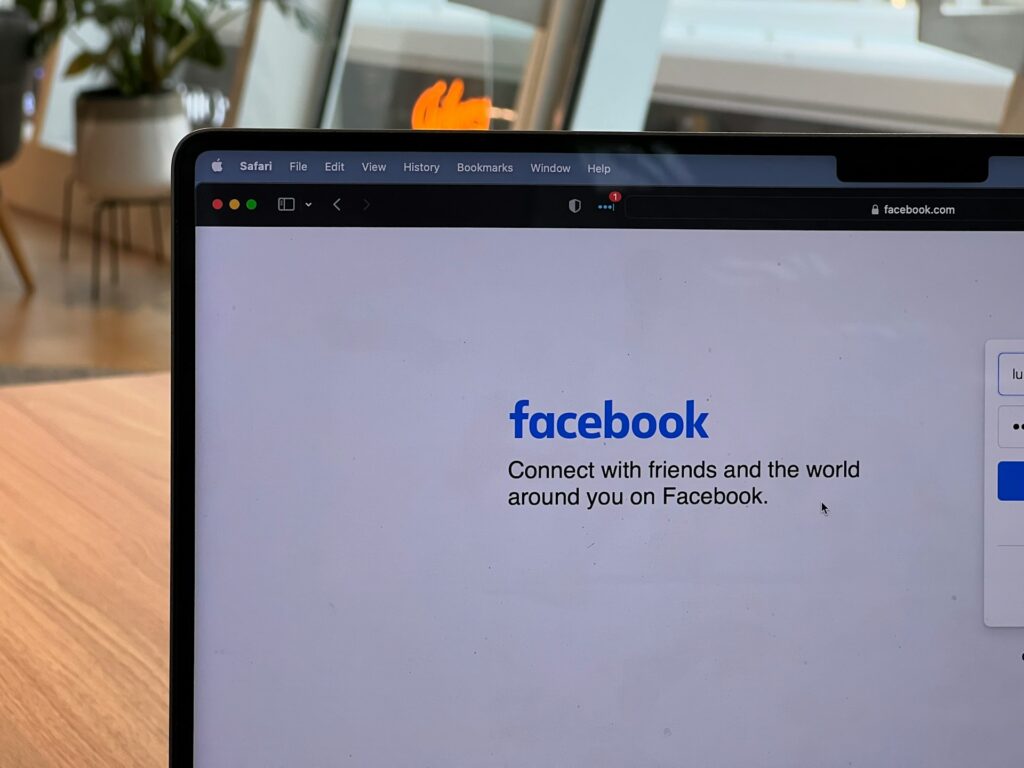- Blog
-
For Sellers
Countries celebrating Black Friday & other major shopping holidays
From Singles’ Day to Diwali deals, global shoppers don’t wait for November. Retail’s biggest holidays span the entire year.

Think Black Friday is just an American thing? Think again. This shopping phenomenon has gone global, with at least 129 countries now jumping on the discount bandwagon.
From the UK to Brazil, Singapore to Germany, retailers worldwide have embraced this day of deals, creating their own unique spins on the tradition. And Black Friday isn’t alone. A calendar of international shopping holidays keeps cash registers ringing year-round.
Let’s explore which countries have caught Black Friday fever and discover the other major shopping events that drive global retail sales throughout the year.
Top countries celebrating Black Friday
As the busiest shopping day of the US holiday season, Black Friday naturally became known worldwide. The event is now observed in many retail stores around the globe and has gained a prominent online presence.
Aside from the US, here are the other countries celebrating Black Friday:
United Kingdom
According to Mintel, the total sales during 2023’s Black Friday in the UK was approximately £12.3 billion, up by 8.3% from 2021. Despite financial pressures, UK shoppers continued to participate in the event, with 49% buying at least one item.
Since many deals occur in November, UK shoppers use Black Friday to spread their costs for the holidays, securing discounts to buy Christmas gifts. Mintel’s research found that in 2022, 16% bought clothing or footwear, 39% bought a promotional item from Amazon, and 51% admitted to impulse buying.
Germany
Black Friday is also relevant in Germany. In 2022, 42% of Germans were expected to spend between €101 and €300 on Black Friday. About 73% of shoppers were most interested in electronics, while 46% looked forward to fashionable finds.
The other popular categories were furniture (28%), sports items (28%), games (27%), cosmetics (26%), food and drink (22%), health (20%), books (20%), travel (17%), subscriptions/contracts (12%), and insurance/finance (8%).
Black Friday online sales in Germany saw an increase of $440%, the second highest among European countries that observed Black Friday in 2022.
Brazil
In terms of online retail sales, Black Friday is big in Brazil. However, 2024’s online sales only generated over BRL3.2 billion, down from BRL4.3 billion in 2021. The Brazilian National Team’s debut in the World Cup was found to have an unfavorable effect on the 2022 sales.
Still, total Black Friday sales saw a 940% surge compared to an ordinary day. This amount made up 10.5% of the entire year’s sales.
Popular categories include toys and games (28%), electronics (9.5%), and home and decoration (9%). Beauty and personal care, as well as fashion, are honorable mentions.
According to a Globo survey, around 24% of Brazilian shoppers want to buy new smart devices on the upcoming Black Friday, while 22% are interested in new apparel and shoes. Additionally, 20% are looking into buying perfumes and cosmetics, and 19% wish to check out home electronics, like TVs and audio equipment. Lastly, 15% want to buy kitchen appliances like mixers and blenders.
France
While Black Friday is widely celebrated in France, French shoppers are advocating for a Light Friday because of the environmental impact of the traditional Black Friday. With clothing as the most popular category during the event, fast-fashion retailers leave a dire effect on the environment when they dump tons of unsold and unwanted items in Chile’s desert.
Full of chemicals, clothing takes hundreds of years to decompose, and as they do, they threaten the desert’s fragile ecosystem and the nearby communities’ health. By celebrating Light Friday, ethically produced clothing and other items can be put under the spotlight, urging French consumers to shop with minimal environmental impact.
We have yet to see if Black Friday in France will have an eco-friendly twist, but the event is undoubtedly kicking off this year.
Singapore
Black Friday is also the biggest shopping event in Singapore. Deals are primarily found in online marketplaces like Amazon, Lazada, and Shopee. Electronic retailers, including Lenovo, Samsung, Apple, and Dell offer incredible deals and promotions during Black Friday in Singapore. Shoppers can also enjoy great discounts on home appliances from Robinsons.
Philippines
The Philippines also holds Black Friday around the same time that the US and other countries do. Many Filipinos prioritize shopping as the holiday season approaches, so brands have taken advantage of their increased buying habits by offering Black Friday deals.
Popular categories during Black Friday in the Philippines include home appliances, electronics, cosmetics, and fashion. Some brands with the biggest deals are Samsung, Smeg, DataBlitz, Inglot, Sephora, Uniqlo, Puma, and New Era Cap.
Australia
Australians don’t miss out on Black Friday as well. Amazon and eBay offered incredible discounts, while cosmetic, fashion, and homeware brands ran deals until after the event. Electronic brands like Samsung sold phones, tablets, and other devices at a discount. Shoppers also scored price cuts on sports and fitness tech products from Rebel Sport and Wiggle AU.
Other popular categories include home appliances, cameras, audio equipment, music, and video games.
The history of Black Friday
When did Black Friday start, and did it influence other shopping holidays in the world?
According to Britannica, it is believed that the term Black Friday might have been born because businesses operated at a loss or “in the red” until the day after Thanksgiving when special discounts and promotions finally let them earn a profit or put them “in the black.” But this isn’t historically accurate.
A more factual explanation behind the term Black Friday can be traced back to the early 1960s. At the time, Philadelphia police officers started using the term “Black Friday” in reference to the chaos that ensued when numerous tourists visited the city for their holiday shopping. The massive crowds forced the police to work longer shifts as they had to deal with inevitable traffic jams, shoplifting, and other issues.
As such, the term Black Friday was born in Philadelphia. Merchants even attempted to give it another name, like “Big Friday.”
But Black Friday didn’t signify a boost in sales until the 1980s. Back then, most stores experienced immense sales growth on the Saturday before Christmas, not the Friday after Thanksgiving. But now, Black Friday and Cyber Monday are the most exciting shopping holidays of the year, prompting consumers to line up in stores or stay up until midnight to get first dibs on special discounts and deals.
Because of that and many other factors, Black Friday significantly impacted the global retail industry. It has changed how retailers view holiday shopping, enhanced the importance of holiday spending, and encouraged brands to offer offline and online deals. Some countries may oppose it, given their negative views on capitalism and consumerism, but Black Friday remains superior in many cultures.
Major shopping events worldwide
Many countries may not celebrate Black Friday, but it doesn’t mean they don’t experience yearly sales. Here are the other significant international shopping events worth noting.
Cyber Monday
Cyber Monday is just as iconic as Black Friday in the US and many other countries. In fact, it has already replaced Black Friday as the biggest annual shopping holiday in the US. Debuting in 2005, Cyber Monday was established to encourage consumers to shop online instead of in-store, creating less chaos and more streamlined purchases. Sure enough, it often offers a calmer and more convenient shopping experience than Black Friday.
Another great thing about Cyber Monday is the secondhand offers. Many people who bought items on Black Friday resell them for a cheaper price on eBay. You can also find older products, like TVs and consoles, at a discount if Black Friday’s deals on the latest items are still unaffordable.
Singles Day
Singles Day, or Double Eleven, is China’s unofficial version of Black Friday. It is celebrated annually on November 11, hence its alternate name, Double Eleven. On the other hand, it’s called Singles Day because it was originally a celebration for single people in the 1990s.
Singles Day 2022 in China featured over 290,000 brands from 90+ countries and regions across 7,000+ product categories. Revenues on prominent platforms like Alibaba and JD.com reached approximately $36.7 billion between Thursday evening and Friday afternoon.
Many shoppers scored deals on Singles Day by watching social livestreams, which amassed more than 300 million views. Over the sales period, 62 influencer- and merchant-run live-streaming channels exceeded $14.1 million in gross merchandise value (GMV), while 632 influencer- and merchant-run live-streaming channels earned more than $1.4 million in GMV. When Singles Day officially commenced, Taobao Live’s rural live streamers conducted over 100,000 live sessions showcasing local products.
Diwali
Diwali, or the Hindu Festival of Lights, is among the most sacred religious festivals in Hinduism, Jainism, and Sikhism. It is celebrated annually on November 12 in India, Malaysia, Singapore, Myanmar, Nepal, Pakistan, Sri Lanka, Fiji, Guyana, Suriname, Mauritius, and Trinidad and Tobago.
Despite being a religious holiday, Diwali is urban Indians’ favorite shopping season. Shoppers from North and West India look forward to it the most. According to the Third Festive Pulse survey by The Trade Desk, roughly 70% of Indian shoppers are ready to spend more this Diwali, up by 35% from last year.
The intended increase in consumer spending is due to consumers’ beliefs that their financial situation has improved (53%) and their eagerness to celebrate more this year (49%).
A significant portion (84%) of Indian shoppers already expressed interest in buying luxury goods, while 80% wanted to focus on gold. Among those who want to spend more, 68% reported increasing their budget for new clothes, 65% for gold and jewelry, and 64% for Diwali food items and gifts for family. Another 64% wanted to spend more for their colleagues and friends.
Popular categories among Indian shoppers include toys, games, and collectibles (50%), home and living (50%), and travel (47%).
El Buen Fin
El Buen Fin is Mexico’s largest discount event. It will commence this year on November 13-17.
El Buen Fin was introduced in 2011, focusing on bolstering the economy, stimulating the domestic market, and upholding consumer rights, benefiting formal businesses. As such, it is the most significant “commercial party” in Mexico, thanks to the discounts, sales, and other deals up for grabs. But what makes El Buen Fin even more remarkable is that the Tax Administration Service (SAT) and the Ministry of Economy will provide training programs to formal businesses, helping them boost their sales.
To ensure consumer safety, Procuraduría Federal del Consumidor (PROFECO) offers “Quién es Quién en los Precios,” a tool for comparing prices and reporting suspicious activities. El Buen Fin’s website also includes a dedicated section for understanding consumer rights and cybersecurity recommendations by the Mexican Internet Association.
Lunar New Year
Lunar New Year is an important shopping day for all countries celebrating this holiday, such as China, South Korea, Vietnam, and more. But discounts can also be found worldwide.
Luxury goods are often the highlight of the Lunar New Year. Shoppers consider them a treat for themselves or gifts for loved ones. Popular categories include clothing, accessories, designer handbags, watches, and other fashionable items worn during the holiday. Therefore, many high-end and luxury fashion brands release special collections or limited-edition items to celebrate the Lunar New Year.
Luxury brands position their offerings as the perfect investment to celebrate this holiday, creating a sense of exclusivity around their brands and markets. Since Chinese shoppers comprise a significant portion of the growing global luxury market segment, brands like Gucci, Chanel, and other prominent designer names see it fit to run sales and promotions during the Lunar New Year.
But luxury goods aren’t the only items that shoppers look for during this holiday. Food, clothing, holiday decorations, and fireworks also sell well during the event since the Lunar New Year is essentially a period of gatherings and parties with family and friends.
Preparing your business for Black Friday and other shopping holidays
If your new business is about to experience its first Black Friday, here’s how you can prepare for it (and for other shopping holidays, for that matter).
1. Plan ahead
Online shopping will unsurprisingly dominate Black Friday. So if you don’t have a store on Amazon or eBay yet, explore these platforms to let your products reach millions of shoppers instantly. Both platforms have excellent seller tools that allow you to promote your products at an affordable price. You can also see the deals that other Amazon or eBay sellers offer, enabling you to plan your own Black Friday and Cyber Monday (BFCM) promos with real data.
2. Test and prepare your store for traffic bumps
Online stores are bound to experience a significant traffic bump before and during BFCM. Ensure that your listings work properly by A/B testing them.
Amazon lets you conduct A/B tests on your listings, allowing you to determine how buyers respond to certain details on your product pages. This gives you the chance to improve your listings in a way that generates the most desirable results.
3. Explore multichannel selling
Spread out your revenue sources by exploring other sales channels, like social media. You can promote or advertise your products on Instagram, Facebook, and TikTok. If you’re already selling on multiple channels, identify which ones generate the most sales and focus on them as you create BFCM deals.
4. Consider expanding internationally
If you use Fulfillment by Amazon (FBA), you can ship your products easily to different places since Amazon handles all shipping tasks for you. You would have to pay a small fee, but you can recoup the costs quickly if your products sell well in your target markets. Research the places where your product has a market, then tap those consumers through targeted ads.
5. Plan for possible issues
Even if Amazon and other prominent marketplaces have flawless seller services, no system is truly foolproof. That’s why you need a backup plan in case anything goes wrong, like your inventory getting damaged and therefore becoming unsellable.
Consider these challenging scenarios and other possible problems. More people than usual will shop on Black Friday, so issues might be unavoidable. Your preparation and contingency plan will highlight your excellent customer service, enhancing your brand’s image.
6. Use an ecommerce management tool

Managing the Black Friday rush requires powerful tools that can handle everything from product research to pricing, inventory, and financial tracking. Instead of juggling multiple subscriptions and platforms, consider a comprehensive bundle like Seller 365.
Seller 365 packages 10 essential seller apps in a single subscription, giving you all the tools you need to prepare for and capitalize on major shopping events like Black Friday. The bundle includes:
- Tactical Arbitrage for online arbitrage, which automatically scans thousands of stores to identify profitable items even when you’re not actively using it.
- SmartRepricer for automatically adjusting your prices during Black Friday without manual intervention. This intelligent system helps you win Amazon’s Buy Box more frequently while maintaining your profit margins during competitive sales periods.
- InventoryLab for streamlined inventory management, ensuring you don’t lose money to prep and shipping errors during the BFCM chaos.
- … and 7 more seller apps for other parts of your business!
With all these tools available through one subscription at just $69/month, Seller 365 eliminates the hassle and expense of managing multiple software subscriptions, saving both money and valuable time during the busiest selling season of the year.
Final thoughts
Black Friday has evolved from a Philadelphia traffic headache to a global retail phenomenon that crosses borders and cultures. Despite some opposition to its consumerist nature, this shopping holiday continues to thrive, bringing deals to eager shoppers and opportunities to businesses worldwide.
For sellers, these global shopping events represent prime opportunities to boost sales and connect with customers when they’re most ready to spend. The key is preparation—having the right inventory, pricing strategy, and systems in place before the buying frenzy begins.
Ready to make the most of Black Friday and other major shopping holidays? Seller 365 gives you all the tools you need in one affordable package.
Try it free today and transform these shopping holidays from challenges into your biggest revenue opportunities of the year.






















